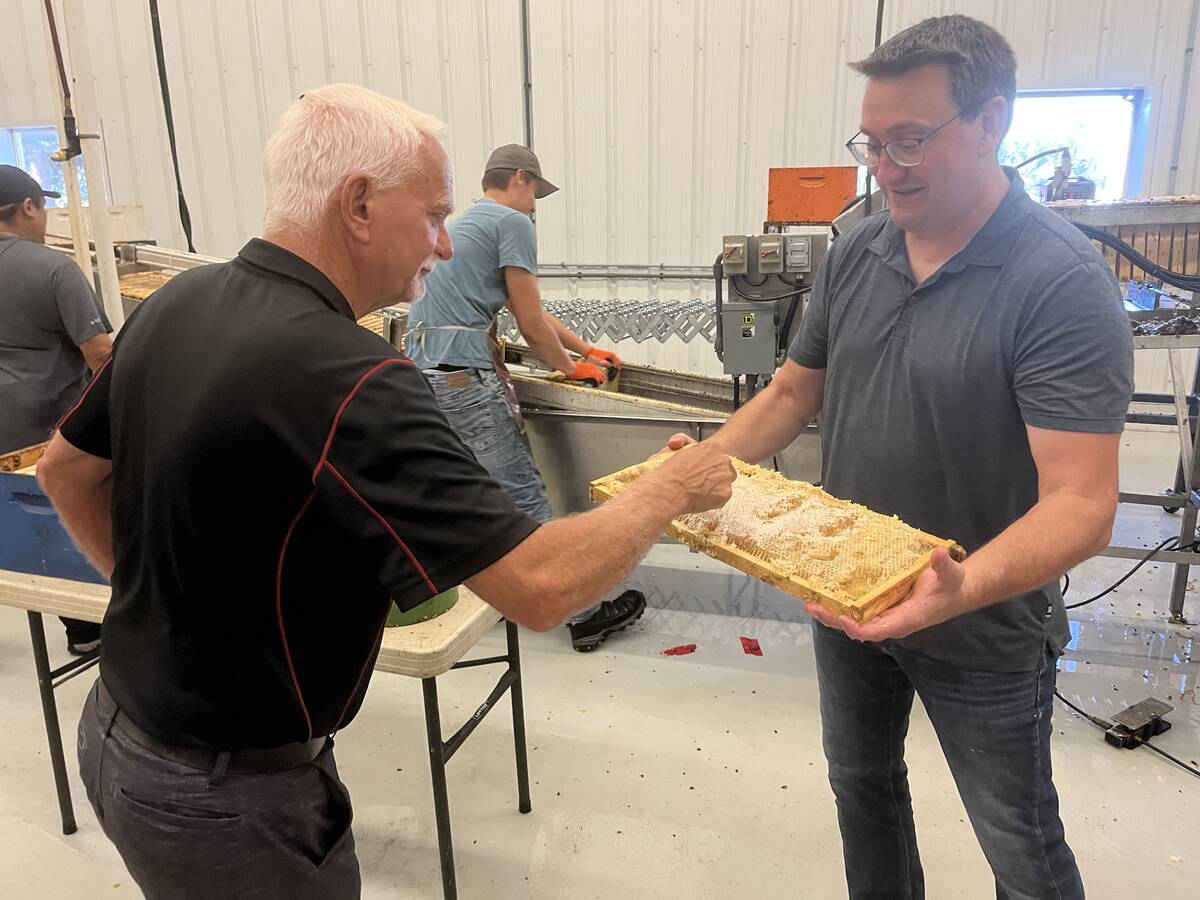A personal discussion of their health risks helped about three-quarters of the farmers who participated in a recent study change their routines.
Mary Smillie, a community development nurse, spent part of her time during the last two years working on a health evaluation project sponsored by Health Canada. A followup conducted when the project wrapped up this spring found that most of those contacted said they had done something specific to change their lives.
For example, she said most farmers know they should wear masks to prevent breathing dust while shovelling grain in bins. But they didn’t know they should also wear a mask when welding to keep poisonous gases out of their lungs. Others said they walk a mile a day now for exercise or that they would quit smoking or wear gloves when dealing with chemicals.
Read Also

Alberta honey business ‘thrives’ despite bumpy beginnings
Thrive Honey showcases its honey production in market where Alberta produces 40 per cent of all honey produced in the country
The project was done in the Davidson, Outlook and Rosetown areas of west-central Saskatchewan. Smillie said it won an award at this year’s annual meeting of the province’s health districts, “which gave the whole thing a little boost” and allowed her to continue the prevention work.
She plans to keep talking on a broad range of health issues, but will add more emphasis on sun protection because of the increasing number of farmers with skin cancer.
Other health districts have similar programs, but not all dedicate resources this way. One in the Melville, Sask., area does hearing tests as well as respiratory work.
Smillie said she went into the project thinking younger farmers might not value it because “they see themselves as invincible.” But when she checked back she found the voluntary project included farmers from ages 18 to 84, with an average age of 43.
She also discovered that rather than dealing with individual farmers, the process worked better when spouses came in
together.
The benefit of a relaxed atmosphere meant “they’d take the information and figure out together a plan to incorporate changes. Any health change works best when the family does it together.”
















